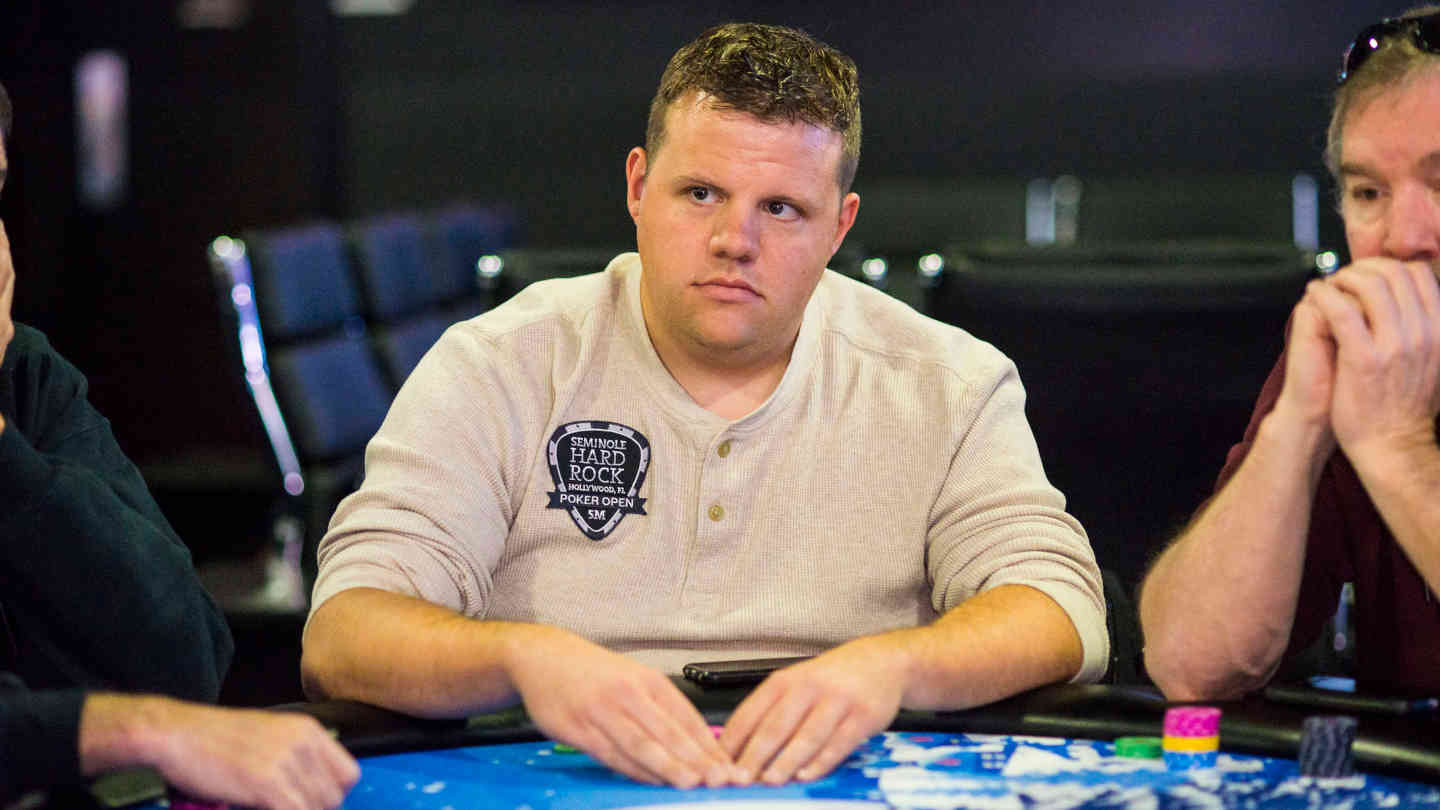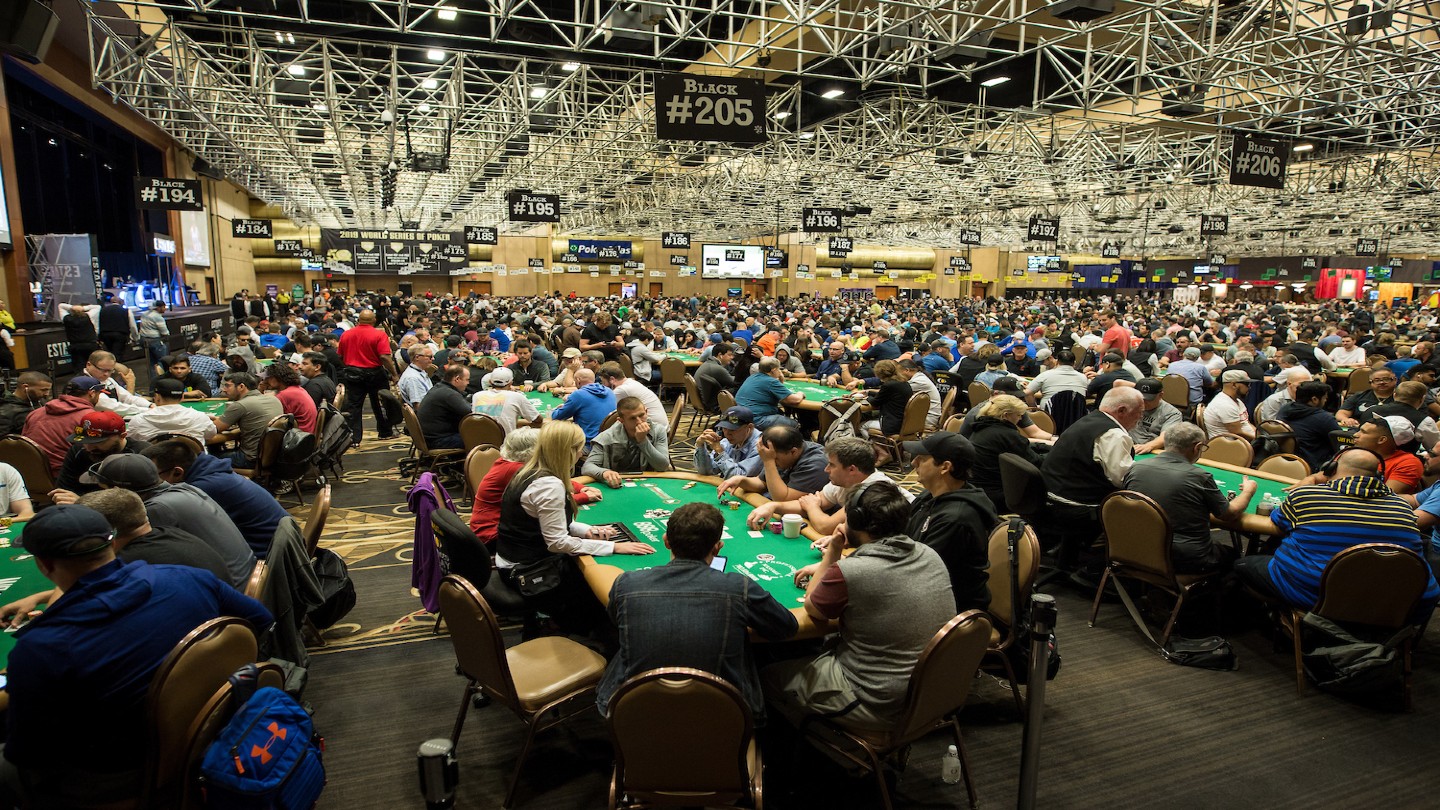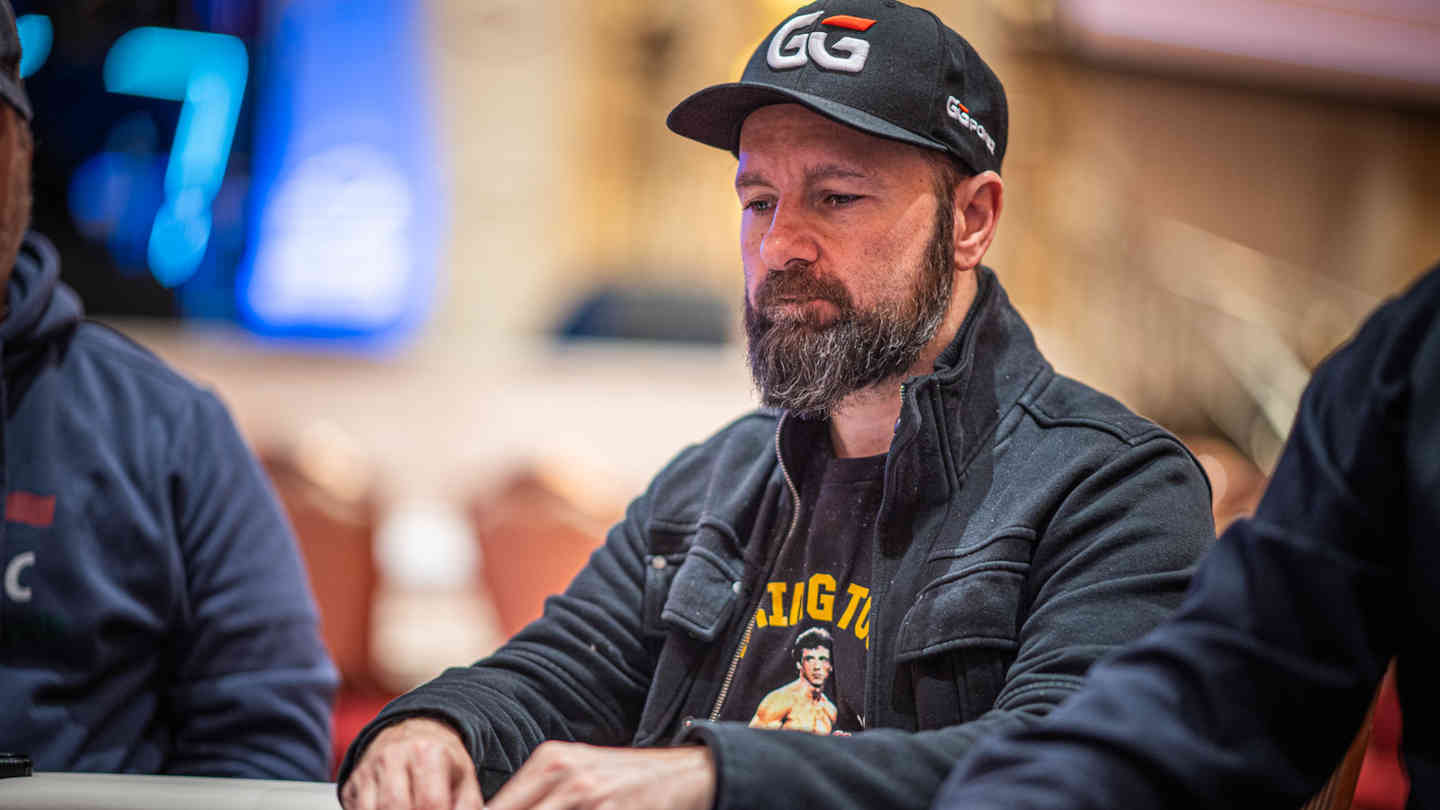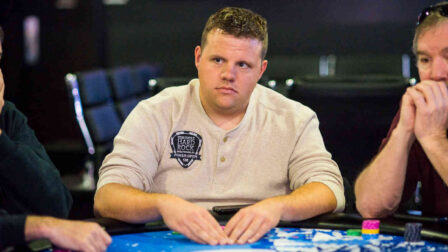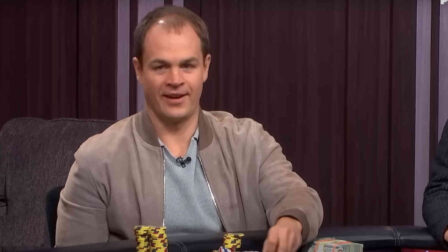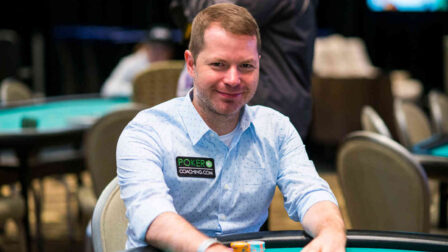How to Defend Your Big Blind in Tournaments
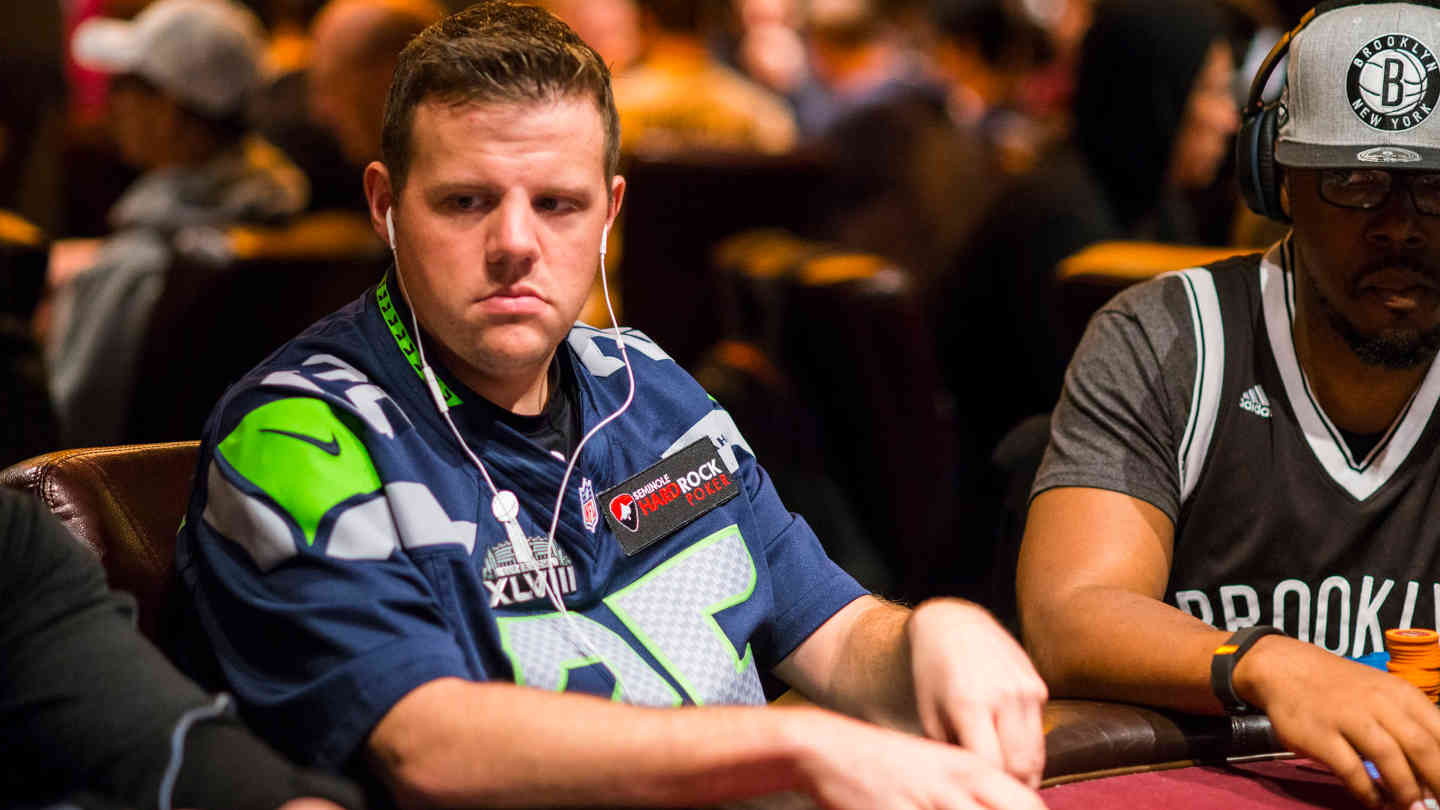
6 minutes
Last Updated: April 22, 2024
If you want to increase your edge at the tables even further, make sure to check the Pokercoaching training site.
…
Having to defend your big blind is one of the most common situations in tournaments. In today’s poker environment, you’ll often be getting a great price to defend with a wide variety of hands, but players often struggle with selecting which hands to continue with and which ones to give up.
The fact of the matter is that you’ll always be losing money from the big blind. The goal is to minimize that loss and bring it below one big blind as much as possible.
Good players understand the importance of this, as your play from the big blind has a big influence on your overall win rate in tournaments.
In this article, we’ll cover some of the most common big blind defense scenarios, focusing first on heads-up pots and then also addressing the situations when there is an open and a call before the action gets to you.
For purposes of this lesson, we’ll assume there is one big blind ante in place, the open is 2.5x, and I’ll be working with standard opening ranges. In real-life situations, you should be ready to make adjustments based on changes to the open size and your opponents’ skill level, as these will influence the ranges.
–
Biggest Mistakes in Big Blind Defense
Before moving on to actual examples, I want to cover some of the most common mistakes that players make when it comes to defending their big blind in tournaments. The four main ones are:
- Under-defending when facing a single raise – you are getting a great price on a call and are closing the action, so you should be calling with a wide range of hands. Many players fold way too much in these spots.
- Not 3-betting enough against late position openers – players raising from the button or the cutoff will have a wide range, and you need to take advantage of that fact by 3-betting more and winning more pots before the flop.
- Not balancing your 3-bet range – players tend to only 3-bet their best hands from the big blind, making them easy to play against after the flop.
- Failing to adjust based on position, raise size, and skill level – instead of auto-piloting, you should consider all these factors when tailoring your big blind defense strategy.
Having identified these main pitfalls, we can now move on to the actual strategy and how you should approach defending your big blind with all these things in mind.
Defending Big Blind vs. a Single EP Raiser
The first situation we’ll look at is an early position opener when we are playing with a deep stack (100 big blinds).
A player raising from an early position should have an opening range of around 18%, and if you look at the graph below, you’ll notice that our 3-betting range in these spots is very narrow.
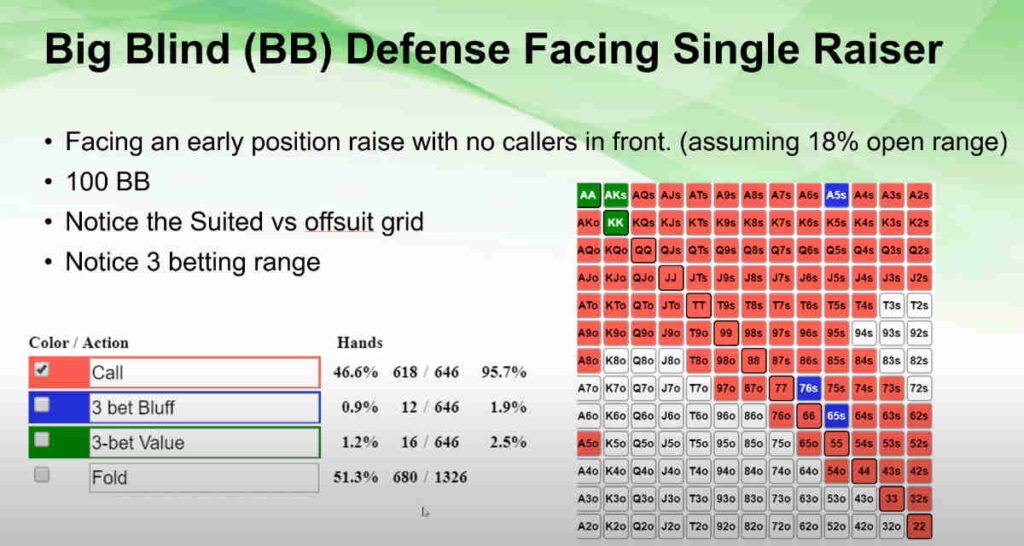
While we identified not 3-betting enough as one of the leaks in big blind defense, this doesn’t apply when playing against an EP opener. We are facing a very tight range, so we want to maintain many of our strongest hands in our calling range, which allows us to also call with many weaker holdings.
Thus, our 3-betting range consists only of the strongest hands, i.e. AA, KK, and AKs, and a few bluffs, such as A5s, 87s, and 56s. The non-value 3-betting range contains hands that play well after the flop.
When it comes to calling, we’ll be calling with almost all suited hands, but against an early position opener, you will want to avoid calling with off-suite hands. Since we’re facing a very tight range, these hands will often be dominated, and your equity realization out of position will be poor.
Playing Against a Late Position Opener
Against a late position opener, i.e., the cutoff or the button, our big blind defense strategy changes. As you can see, our value 3-betting range becomes wider, containing hands like TT+, AJs+, and AQo+, which brings us to about 70 combos of value.
This is the scenario where we need to also have a bigger number of “bluffing” hands in our 3-betting range, as this gives us a good coverage on lower boards. Hands we’ll put in this bracket are the ones that are close between calling and 3-betting, so you choose some of them to 3-bet with.
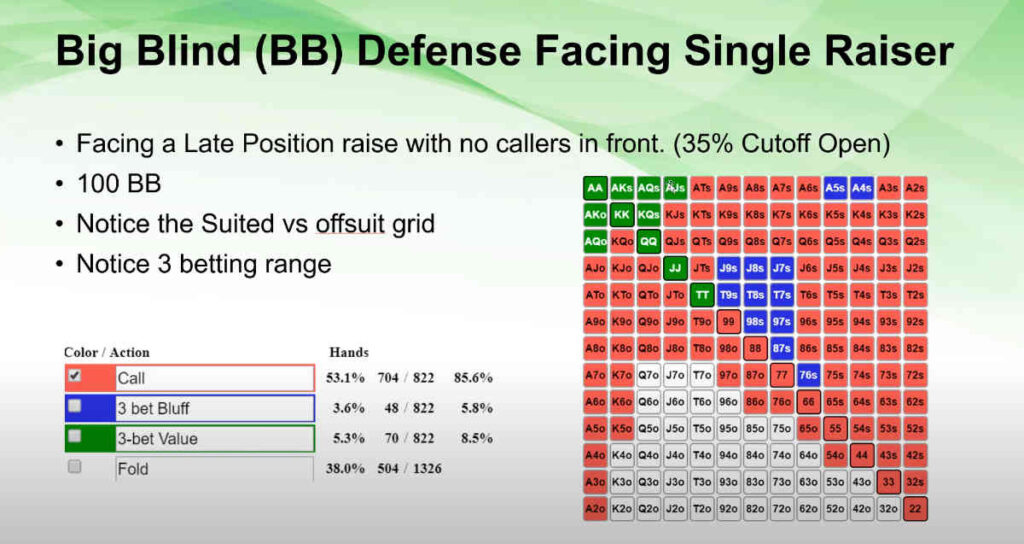
The great thing about this adjustment is that most people aren’t prepared for it. A majority of players only 3-bet for value, so you’ll be able to pick up a ton of pots without any resistance. Plus, you’ll end up winning some big pots after the flop when you make big hands and your opponents don’t believe you connected with the board after 3-betting.
Big Blind Defense vs. Multiple Callers
Although many hands end up with just two players, it’s not uncommon to see a raise and call before the action gets to you in the big blind.
In these spots, you are getting great immediate odds on a call, which leads to players over-defending their big blind. However, despite these immediate odds, you should actually be folding more than in heads-up scenarios, getting rid of about 60% of your hands.
This is because our equity realization three-way goes down significantly. There are now two players who can have us dominated, and the caller will often have the type of hand that dominates us easily (i.e., pocket pairs like 99, 88, hands like KQs, KJs, etc.).
At the same time, with more money in the middle, we have more incentive to squeeze, i.e., 3-bet to try and win the pot. Additionally, the caller usually doesn’t have the strongest range, so we are primarily concerned about the original opener.
Our squeezing range is made up of hands that we 3-bet for pure value, and those hands that play well after the flop but can easily fold a rare 4-bet.
In a situation where both the opener and the caller are in the late position, we can widen our 3-betting range. The fact of the matter is that most players don’t squeeze nearly enough, and your opponents will not adjust properly to your aggression, allowing you to win a lot of chips.
Defending Big Blind on a Short Stack
Shorter stacks mean higher equity realization, so once your stack gets under 20 big blinds, you can defend with almost the entire range. The plan is to see the flop and be ready to stack off with a middle pair or better and any reasonable draw.
When it comes to 3-bet jamming, we want to do it with hands that have a potential to fold better hands and get called by worse.
Against an early position opener, this means shoving with the strongest of hands, plus hands like KTs, JTs, and similar, as these hands can get better ones to fold.
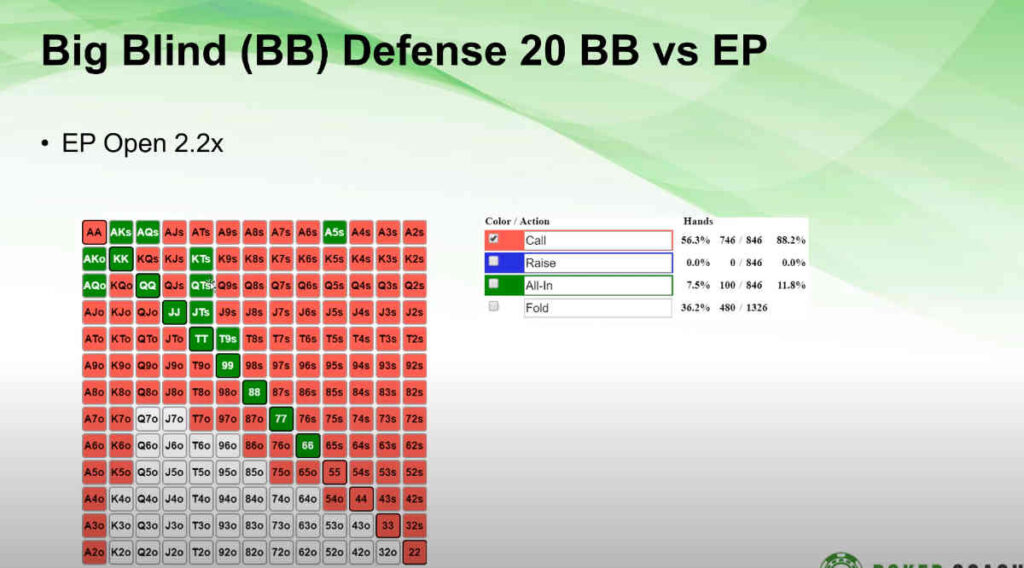
Against the late position opener, we have an even wider shoving range, which includes all pocket pairs, suited aces down to A6s, many off-suite aces, hands like K8s and K7s, and some stronger suited connectors.
To sum it all up, you need to defend your big blind pretty wide, be ready to adjust to particular table situations and take a more conservative approach in multi-way scenarios as your poker equity realization decreases.
Take these tips to heart and start applying them in your tournament play. With time, properly defending your big blind will help significantly boost your long-term results.







